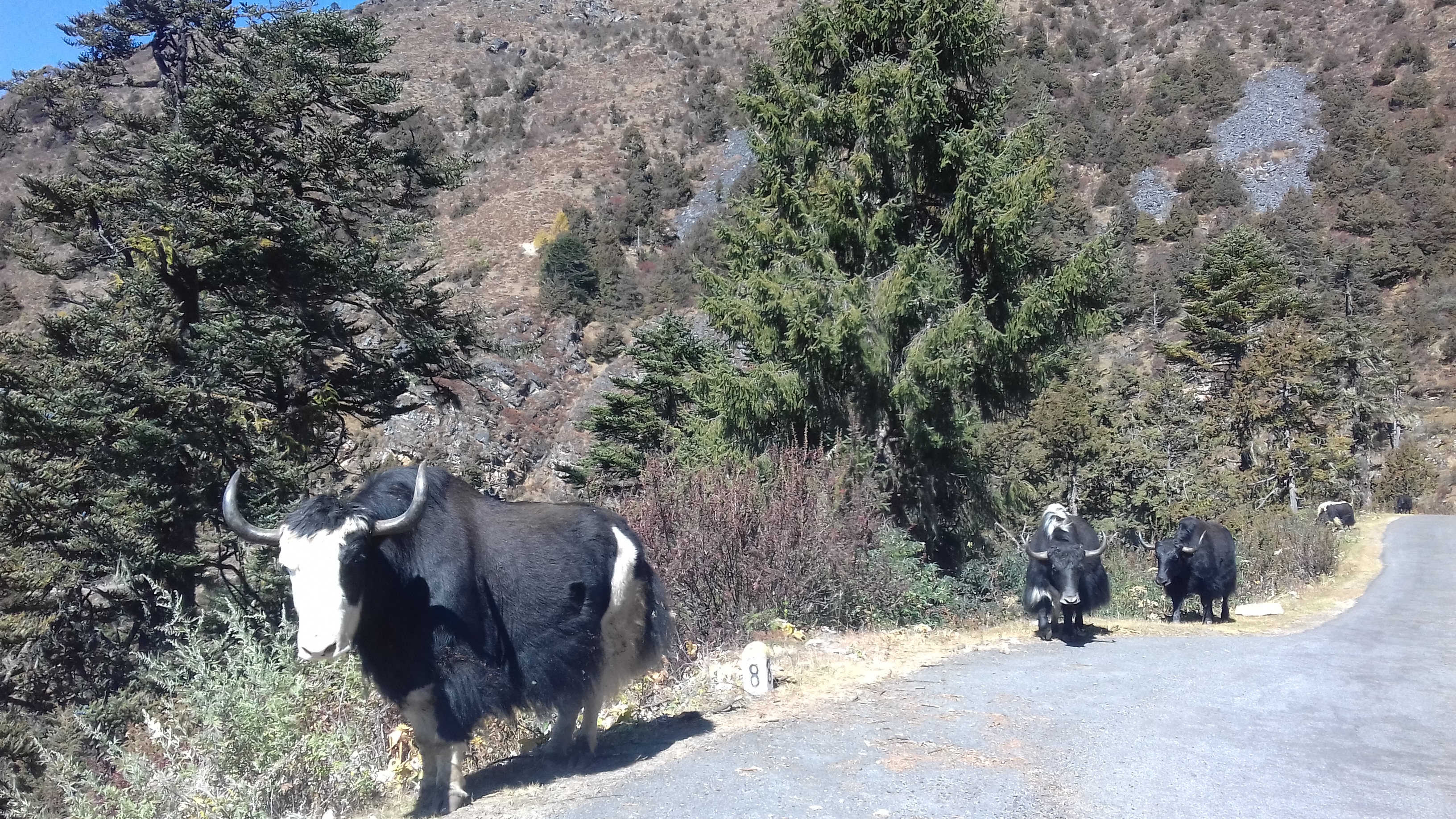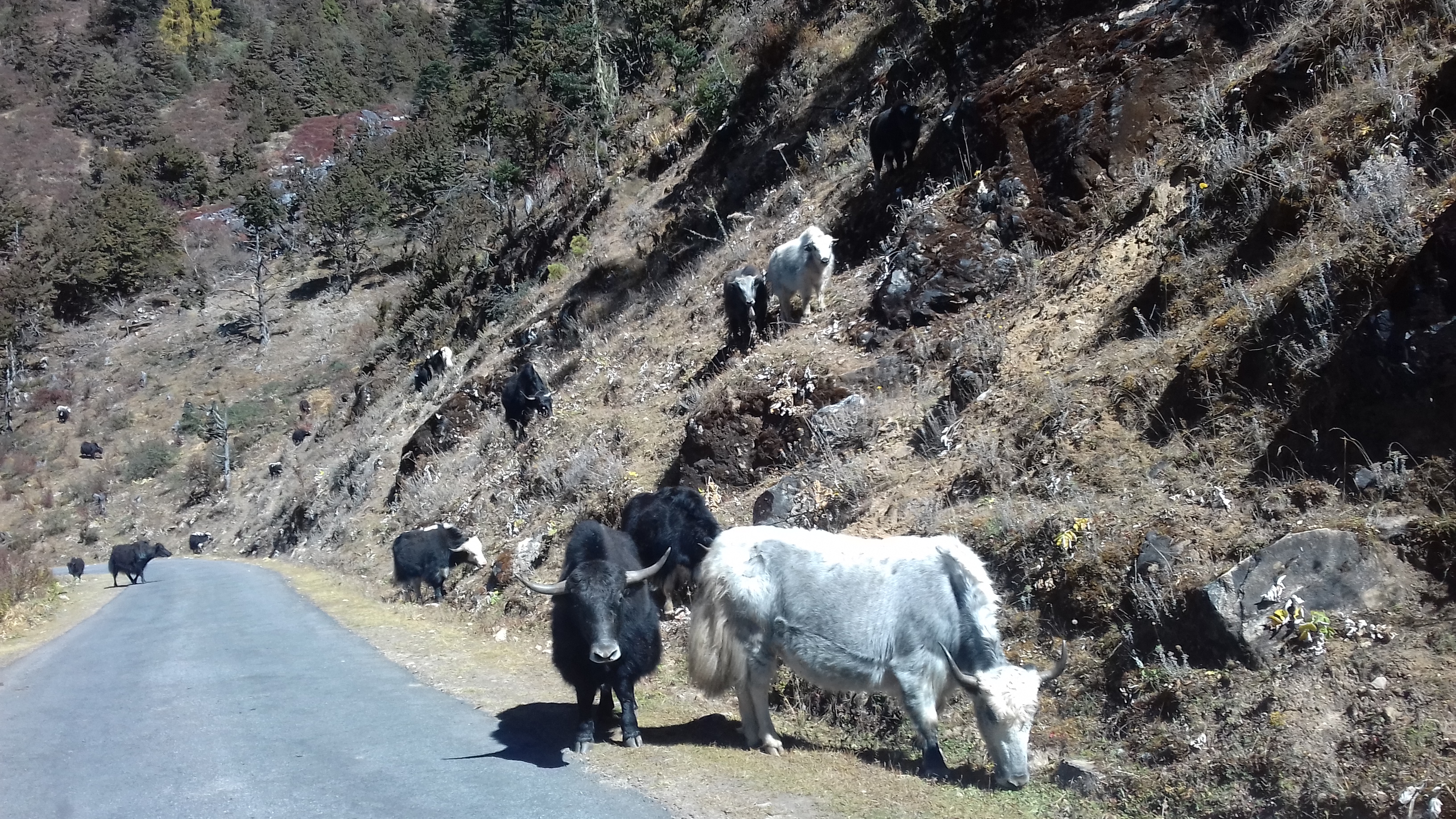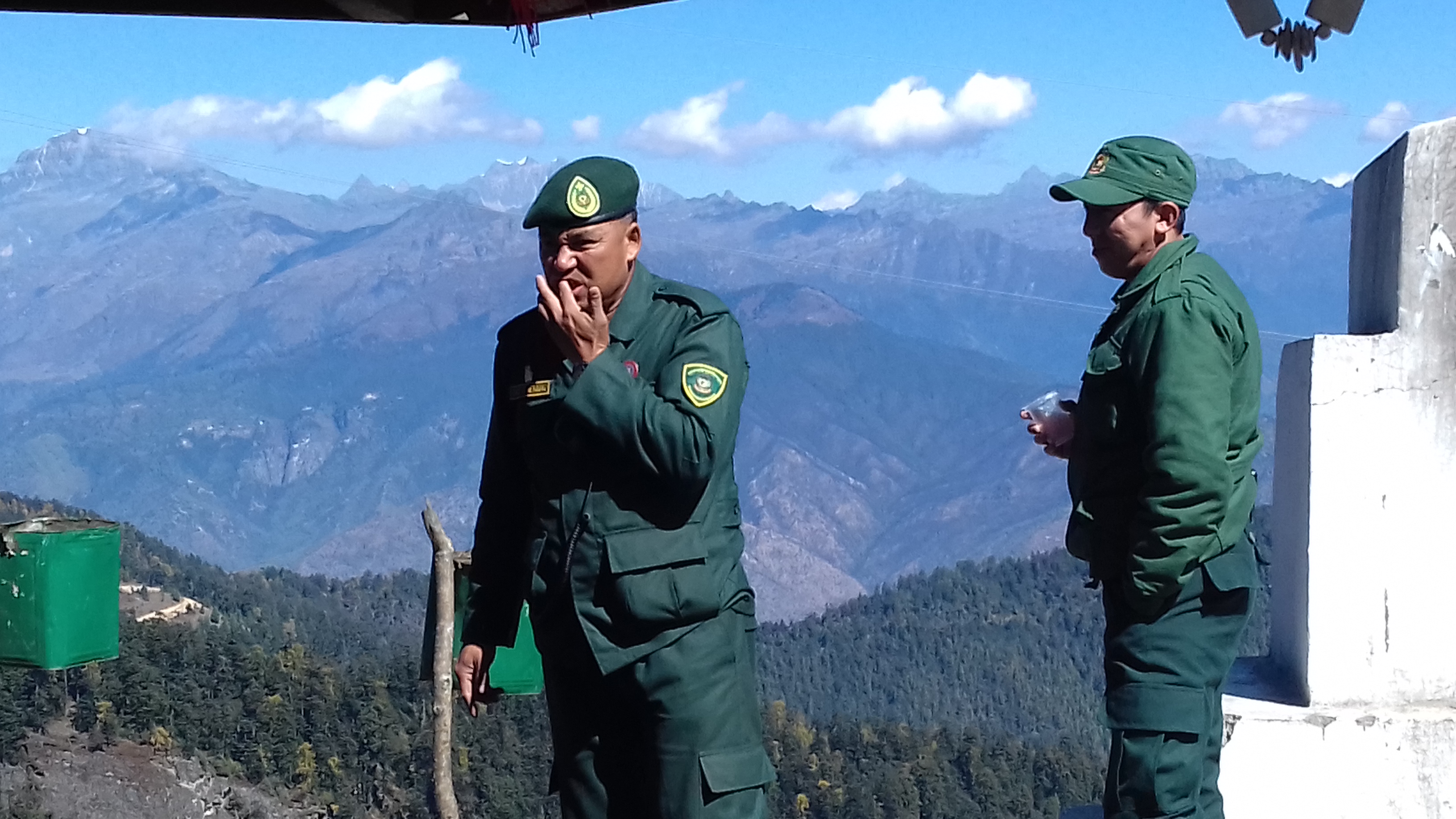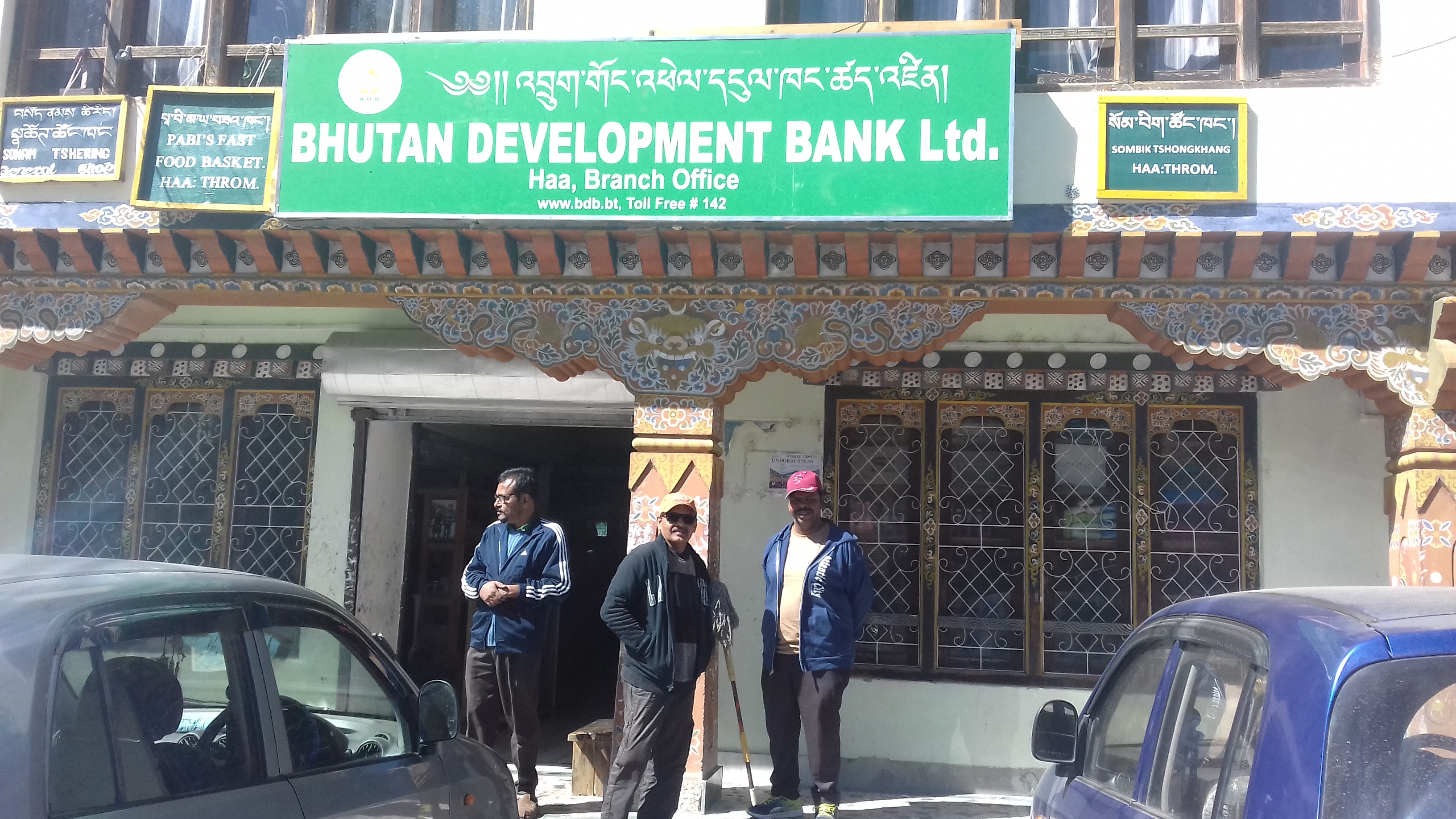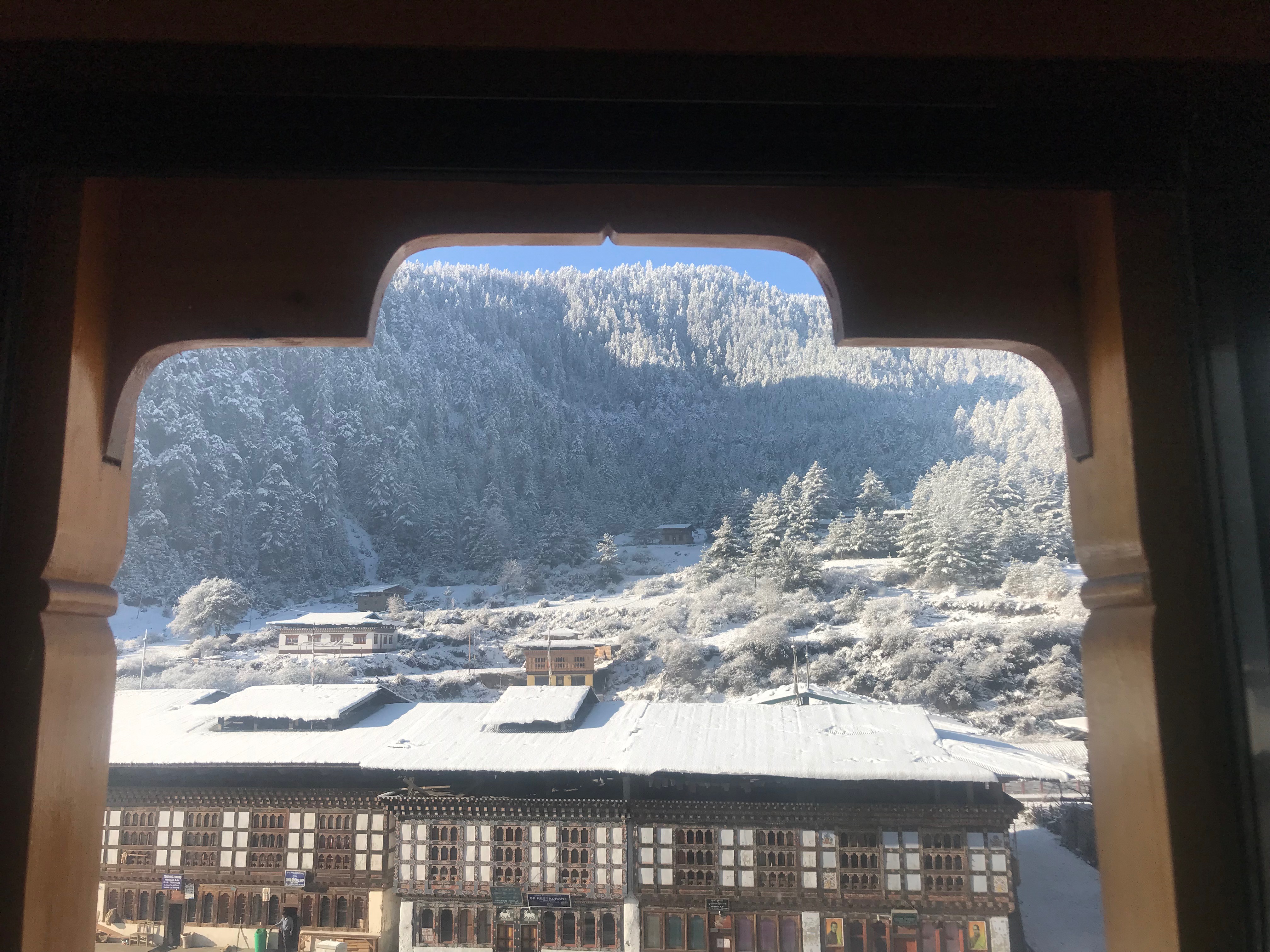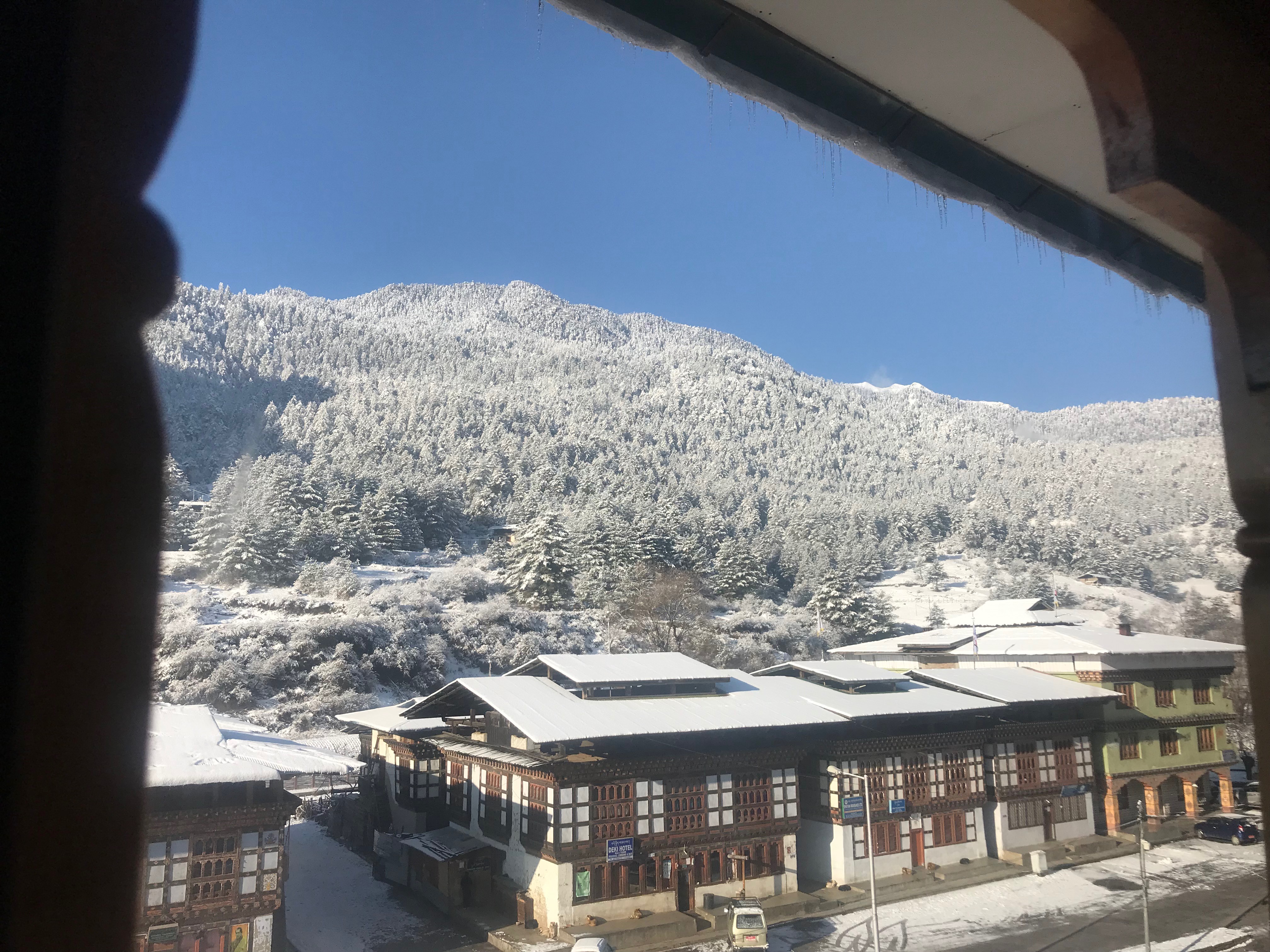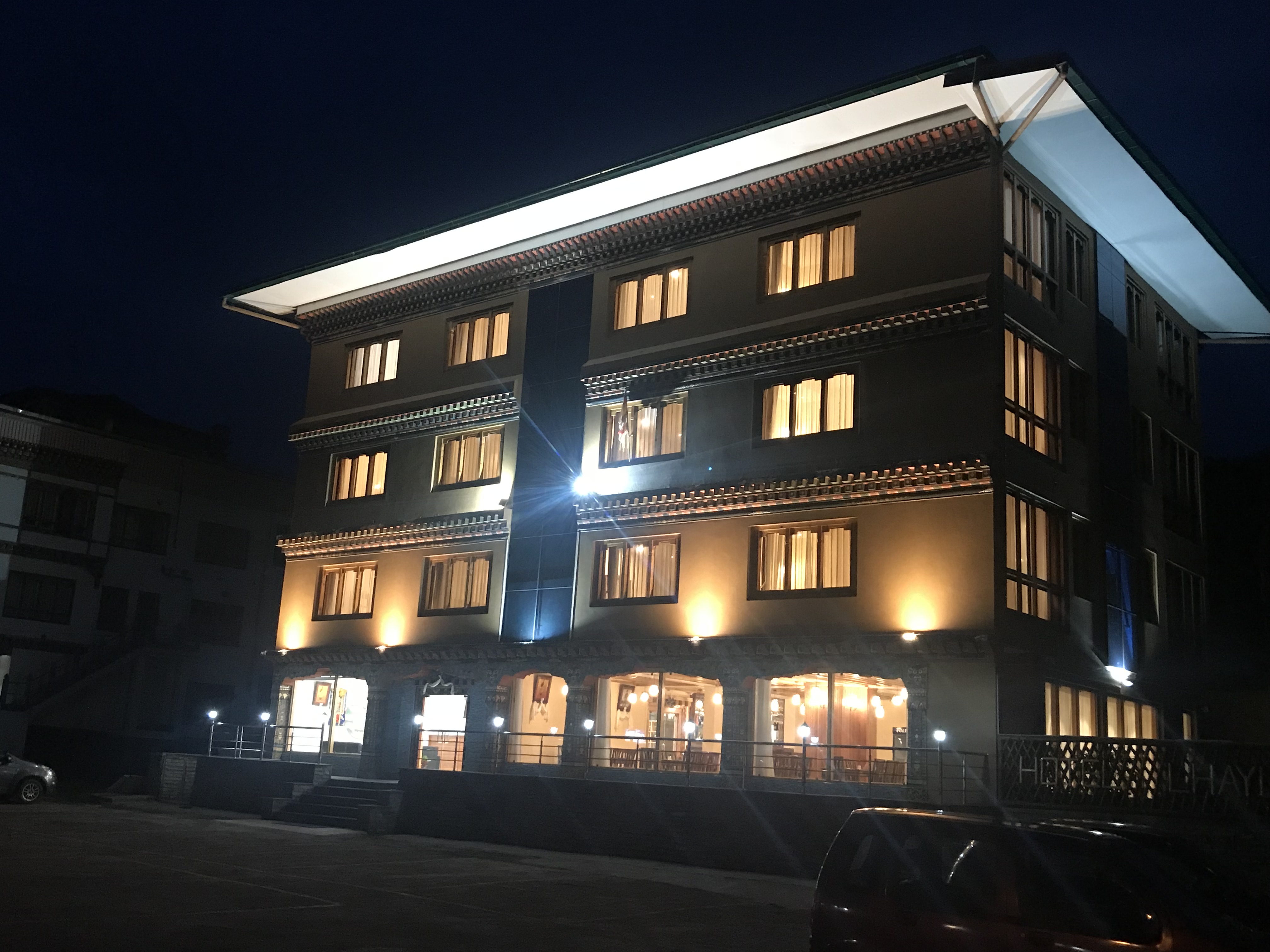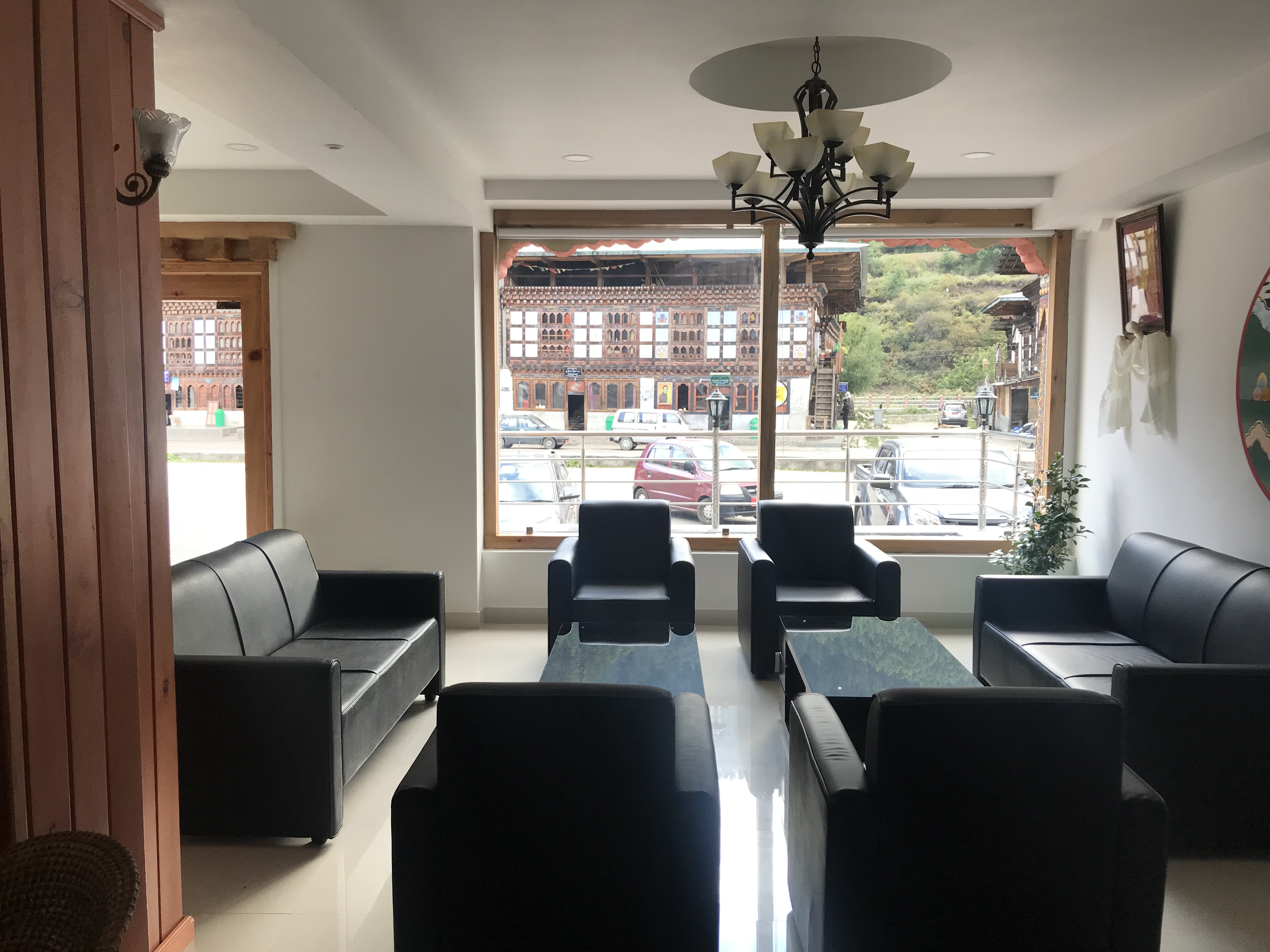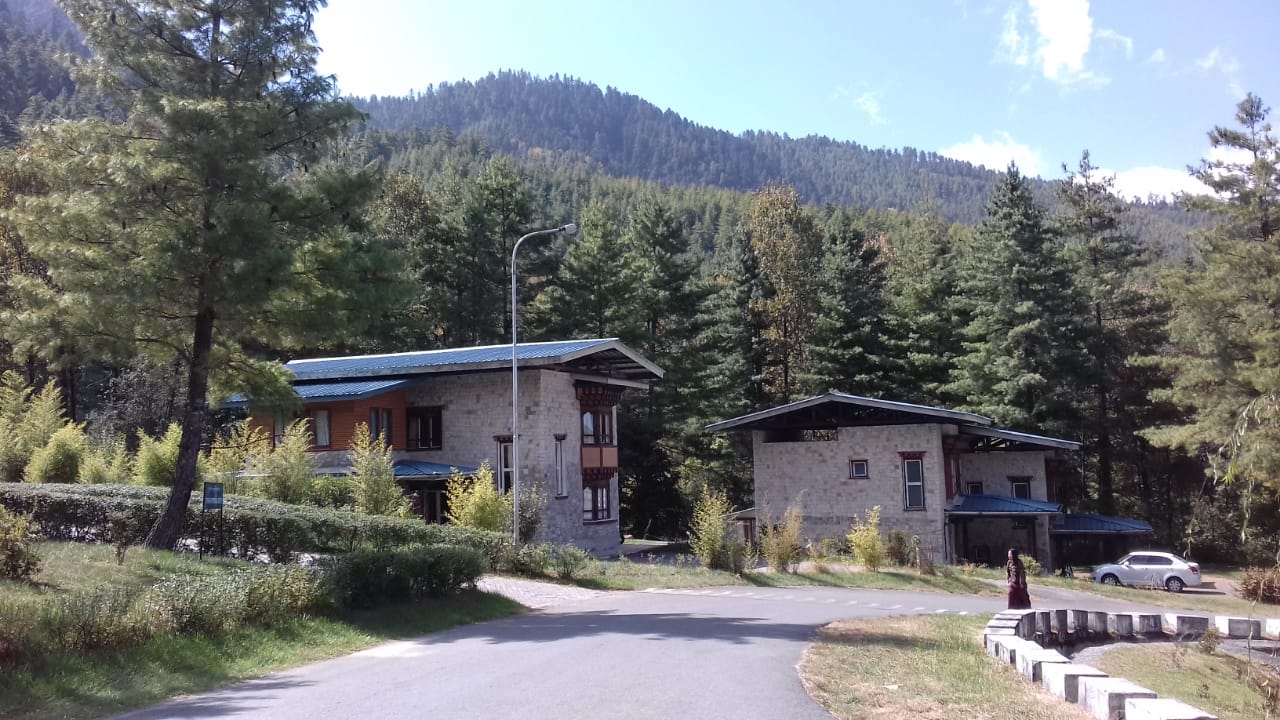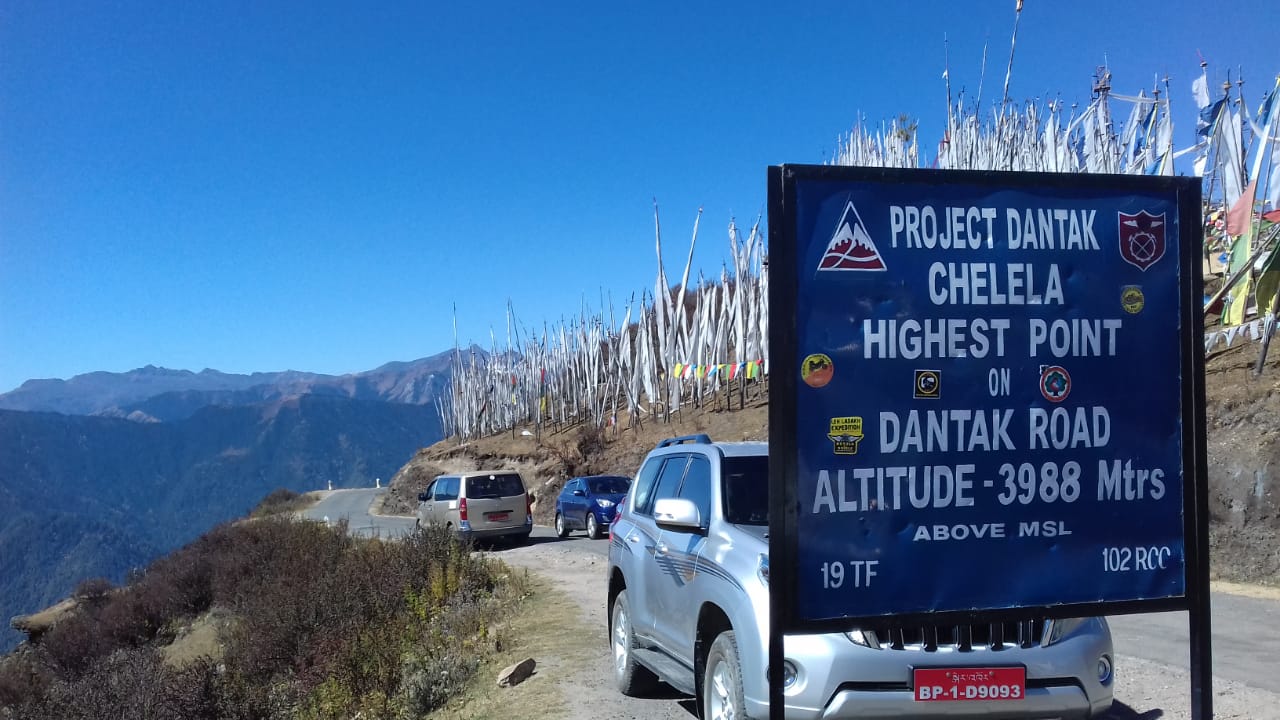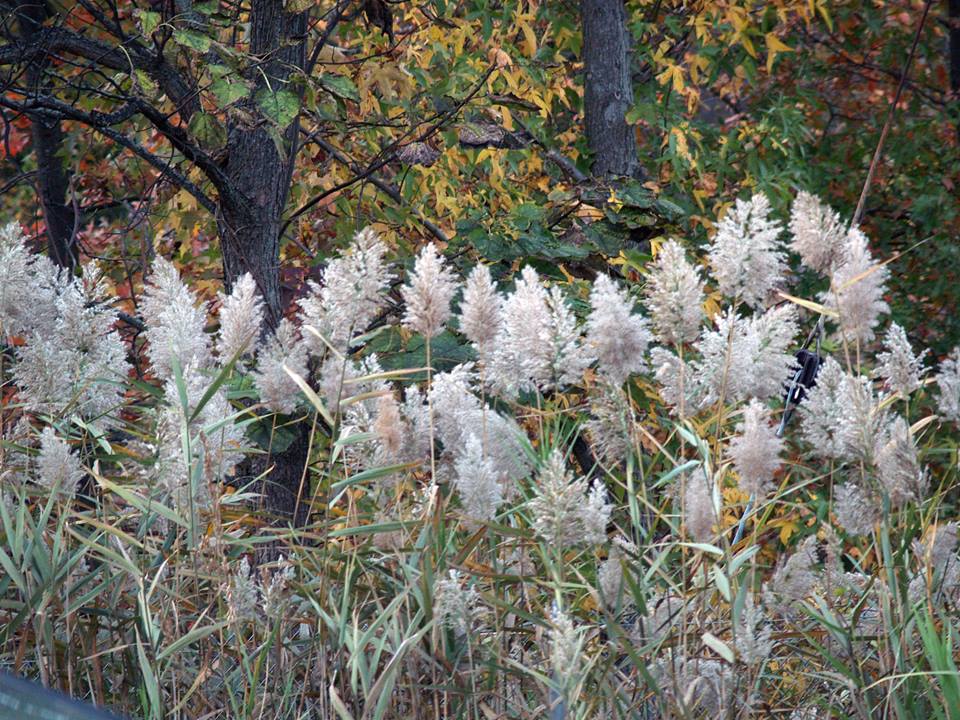Hooked on to Haa valley
Final Part
As we left Chele La Pass (about 13,000 ft between the valley of Paro and Haa, it’s the highest motorable road pass in Bhutan) and drove downhill on our way to the Haa Valley (8760ft), we saw a number of magnificent yaks walking down the squeaky clean mountain road. The yaks’ leisurely and yet majestic movement was a mind-blowing spectacle! These yaks live above 12000 ft in the mountain. Apparently innocuous, they may pose a threat to unsuspecting travelers if “your car gets close to them”, Tshering Drukpa, our driver, warned. I was closely observing the wobbly movement of a baby yak, fiercely protected by its mother.
Yak usually weighs about 300-350 kg (male) and 250-300 kg (female). They generally remain in herds and no other wild animals dare to harm them. They are very sensitive and manage to find moss, lichen and shoot of grasses under the snow, and quench their thirst from the ice melt water. These animals can trek up the steep slopes of the mountains and they can carry load varying from 50 to 70 kg on their backs for about eight hours at a stretch
An encounter with Yaks
The Haa Valley takes one through to the magical place beyond mountains where the world is tranquil and nature pristine, thanks to the government’s commitment and undying spirit to preserve the environment and ethnic culture.
I already mentioned that Bhutan tourism industry is founded “on the principle of sustainability, meaning that tourism must be environmentally and ecologically friendly, socially and culturally acceptable and economically viable”.
The majestic landscape offers hikers a perfect place to explore. Lush green surroundings and architectures from the medieval times are fascinating. One can go on a Poppy trail, live at a home stay, pray at a monastery, or taste some of the most delectable local cuisine in Haa.
we got close to Haa town center, our driver pointed at a huge lush green field where the Bhutanese Army plays golf. An Indian Army Training school is located here. Bhutan Army keeps a constant vigil on the travelers moving in andBefore out of the place as it’s very close to India-China border.
Haa is one of the 20 dzongkhags (districts) which are further divided into 205 gewogs in Bhutan. According to the 2015 census, the population of Haa is 13499,1572 households making it the second least populated dzongkhag in Bhutan after Gasa.
Haa was first opened to foreign tourists in 2002. Spread over 1706 square km, this sleepy valley was known for its animist tradition where residents used to offer blood to their local deities. However, such belief was transformed into to peaceful Buddhist tradition in the 8th century by Guru Padmasambhava. Traces of this belief are still observed here during festivals and rituals.
After a steep drive up the mountain, we took the winding road and descended into Haa. With the pleasant midday sun caressing us, we marveled at the panoramic view of the valley, the sound of silence and the laid-back lives of locals. There were no tourists, and no ‘Bengali bedlam’.
Absolute peace and tranquility!
After a stroll through the town, we walked into Hotel Lhayul for lunch. Elegantly attired, Kinga Norbu, the owner, greeted us. Stunning interior decor and tastefully designed dining hall shows the owner’s sense of aesthetics. Friendly and amiable staff is always there to help you with a smile. We ordered Hakka noodles, and Manchurian chicken. In no time the food was served. It was awesome!
Banking on happiness
“I’d come again and spend more time here,” I told Kinga, her refinement and dignity unmistakable. Her warmth and hospitality was amazing.
Usually tour operators take people up to the Chele La pass only, without taking them further to Haa, about an hour’s further drive. But, you’d surely miss a lot, a lot if you don’t take a trip to the spectacular Ha.
The Indian army cantonment here serves as a base for Doklam post. One can take a trip to local temples, fisheries farm, and even take a hot stone bath.
Those who love adventure must take the Yangthang-Hatey hike. One may drive from Haa town to Yangthang (20 minutes’ drive) to begin the hike. As you trek, you smell history. This hiking trail was the trade route used by the people of Haa in the ancient time. India’s first Prime Minister Jawaharlal Nehru took this route and came to Bhutan on foot from Tibet. He came to Ha valley and met with officials before continuing to Paro and Thimphu. One could walk till Gaychu Lakhang and walk back to Yangthang or drive from Gaychu Lakhang to Ha town. It will take about three hours.
Cultures, landscape, people and food are what makes travel a great learning experience. I savored every bit of it. Really I did!
Journey’s over, but memories remain: memories of the magic mountain, memories of the Bhutanese people, their passion for culture and heritage, their disregard for ‘romantic consumerism’, their unflinching zeal to preserve environment and, above all, their conquest of happiness.
Here’s a rah-rah message for all travel buffs: Visiting the ‘Land of Thunder Dragon’ isn’t just a trip, Bhutan is an experience!
Winter wonderland
PHOTO: by Tashi Om
Thank you, Tshering
(Concluded)
